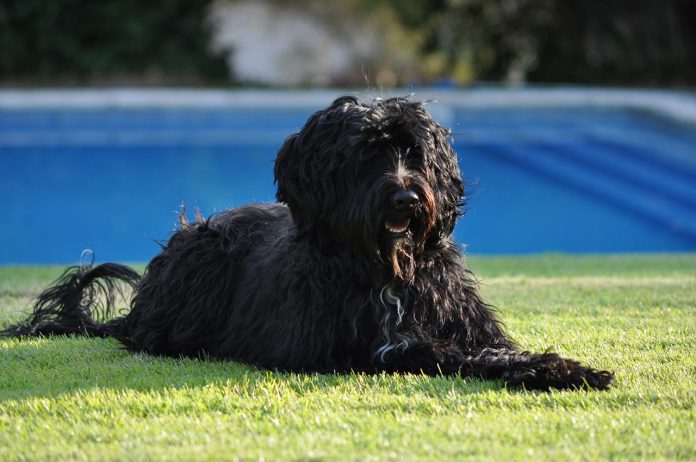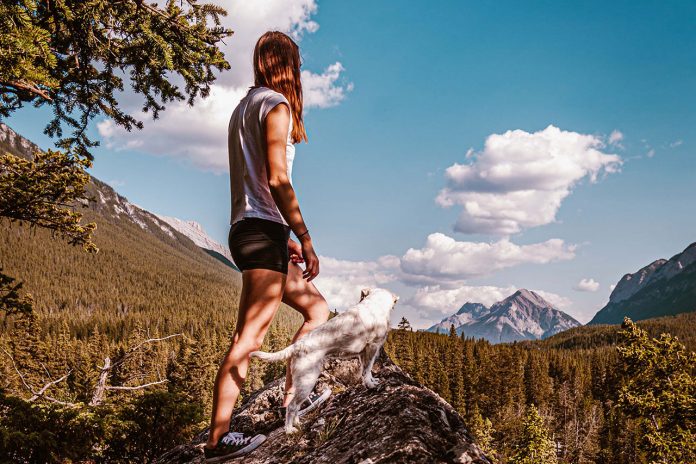Don’t let their large size deter you – Bernese Mountain Dogs can make wonderful hiking companions when properly conditioned. Originally bred as farm dogs in the Swiss Alps, the Bernese breed offers strength, loyalty, and low exercise needs quite amenable to scenic hiking. Here are some tips for a happy hiking with Bernese Mountain Dog.
Table of Contents
You may also want to know: How to start hiking
Getting to Know the Bernese Mountain Dog
To set your dog up for success, first understand these key Bernese traits:
- Moderate energy level – Bernese are content with fairly mild exercise. They don’t require intense speed or distance.
- The thick tri-colored coat makes them heat sensitive – Avoid overexertion in hot temps.
- Devoted nature – Bernese thrives when included in family activities. They live to please their owners.
- People-oriented – Proper socialization prevents shyness. Most Berners love meeting new friends on the trail.
- Large size – Adults range from 75-120 pounds. Consider their joints when hiking.
When properly conditioned, their combination of loyalty and low-key exercise needs make them super hiking partners.
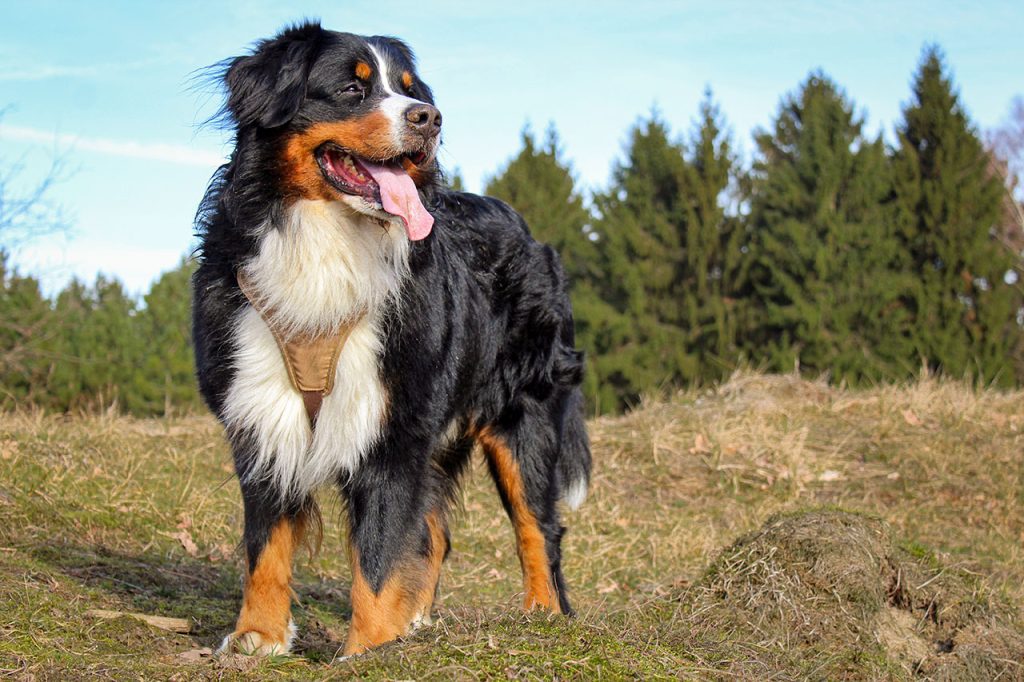
Picking Berner-Friendly Hiking Trails
When selecting hiking trails with your Bernese Mountain Dog look for:
- Gradual slopes – Steep inclines put extra strain on their joints when carrying weight.
- Softer dirt or grassy surfaces – Avoid slick rocks that increase slipping risk.
- Close water access – Streams, ponds, or dog-friendly drinking fountains.
- Partial shade coverage -full sun exposure raises overheating risks.
- Mileage between 1-4 miles – Scale distance to their fitness and conditions to avoid exhaustion or soreness.
- Loop trails – Avoid out-and-backs to add variety.
Keeping Your Bernese Mountain Dog Hike-Ready
Pack these supplies for your Berner’s hiking comfort:
- Comfortable harness – Distributes pulling force if they get distracted.
- Water and collapsible bowl – Bring extra to aid cooling.
- Cooling vest or towels – Avoid overheating their thick fur coat.
- Dog first aid essentials – Bandages, antibiotic ointment, tick removal tools. Their fur hides small wounds.
- Treats – For recall reinforcement and resting breaks. Soft chews are easier to eat on the go.
And be sure to bring your own hiking necessities like navigation tools, phone, nutrition, etc.
Training Tips for Hiking With Bernese Mountain Dog
Work on key skills using reward-based methods:
- Loose leash walking – Use treats and start in low-distraction areas first. Their strength can lead to pulling if excited.
- A reliable recall – Use a long lead when first practicing. Their distraction tendencies require persistence.
- Socialization around other dogs, people, bikes, etc – Berners can grow timid without proper exposure.
- Cues like “This way” and “Let’s go” – Redirect them back to the trail if lingering or wandering.
Keep training upbeat and rewarding. You want your Berner eager for hiking together, not dreading it.
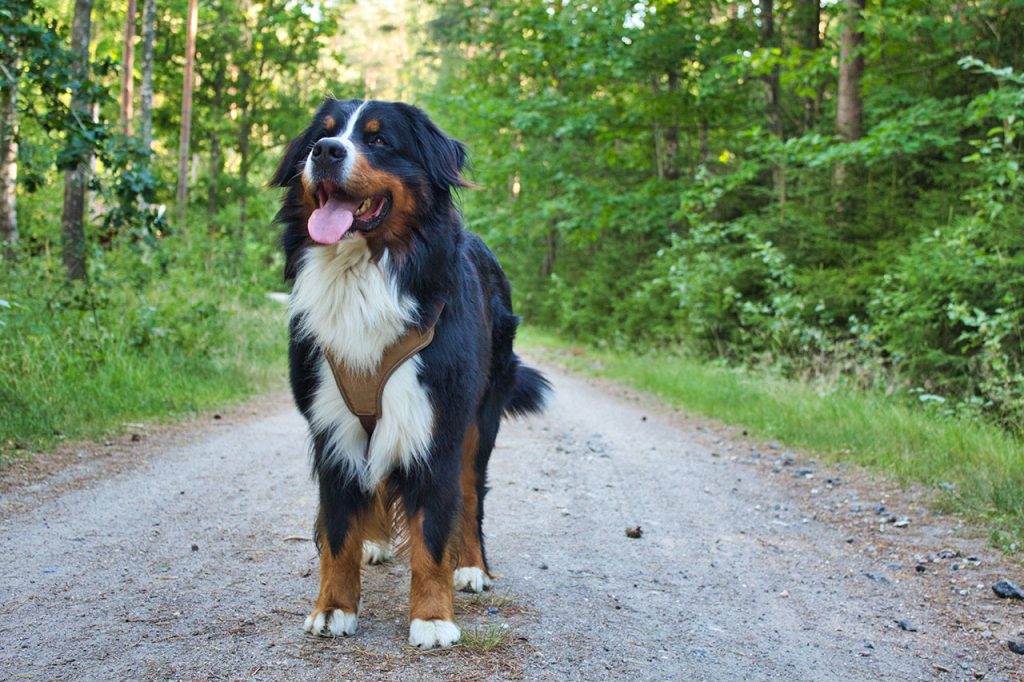
Safety Tips When Hiking With Bernese Mountain Dog
Pay attention to these risks when hiking with a Berner:
- Sore joints or limping – Their large size predisposes them to elbow and hip dysplasia. Limit miles and load.
- Overheating – Their heavy coat makes temperature regulation an issue. Hike in cooler weather and ensure water intake.
- Torn toenails – Keep nails well-trimmed to avoid painful snags on rocks and roots.
- Skin fold infections – Clean and dry their facial and body folds after water play.
Keep hiking distances conservative and gauge your Berner’s comfort frequently. Be ready to carry or assist them if they become injured or exhausted. With age, their endurance becomes very limited.
After-Hike Tips
Once home from a hike, be sure to:
- Give treats and praise for good check-ins, recall, and staying on the trail.
- Provide fresh water then inspect feet and joints for any limping or irritation.
- Use a slicker brush to smooth out their coat and remove any clumps or debris.
- Watch for signs of overheating like excessive panting or drooling. Cool them down.
Proper conditioning, conservative distance, training consistency, and close monitoring provide Bernese Mountain Dogs with satisfying, joint-friendly hiking. Support their devotion to you by choosing adventures scaled to their fitness level.
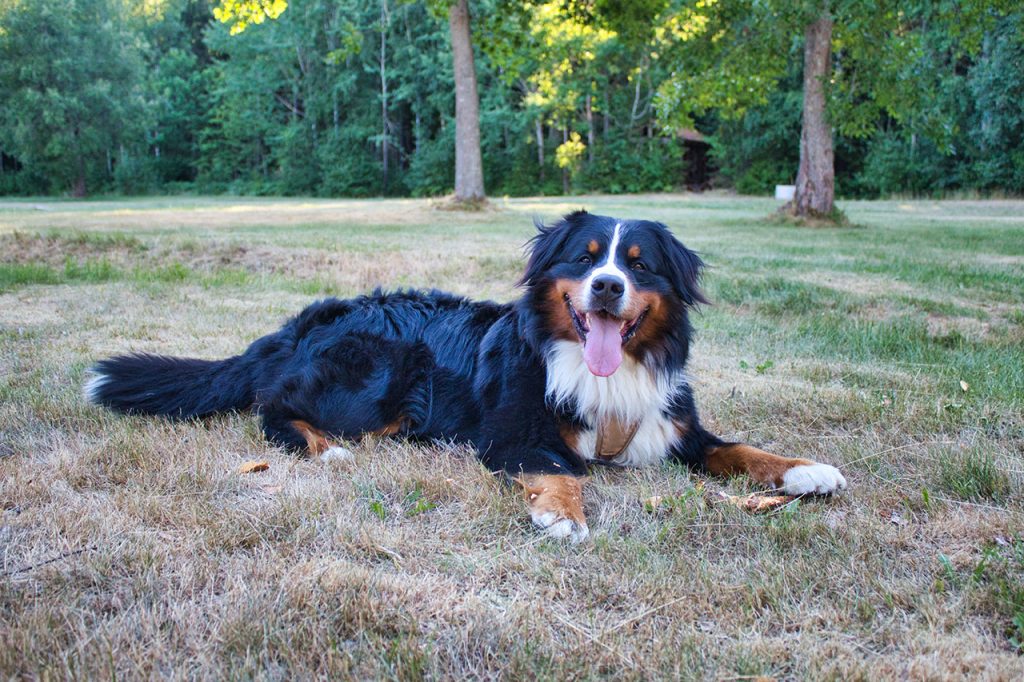
Related Links:
https://en.wikipedia.org/wiki/Hiking



